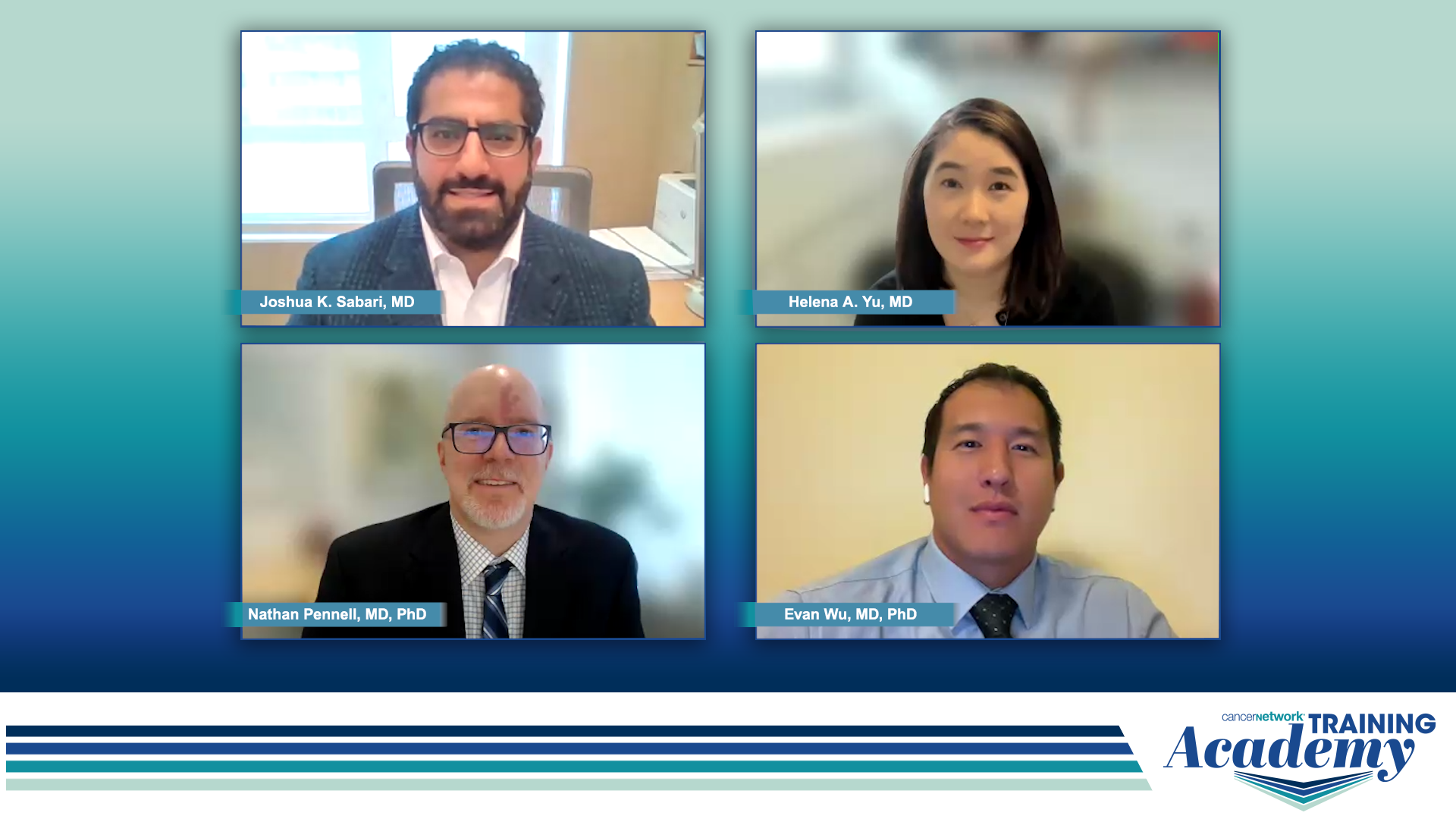Gefitinib/Gemcitabine Better Tolerated Than Gefitinib/Vinorelbine by Elderly Patients With Advanced NSCLC
This supplement to Oncology News International includes 17 reportson clinical trials of targeted therapies used alone, in combination with chemotherapy,or in combination with each other in the treatment of non–small-cell lung cancer (NSCLC),bronchoalveolar carcinoma, glioblastoma multiforme, and renal cell carcinoma.Included is a report on a novel targeted agent recently approved for treatment of NSCLC.
TORINO, Italy-Combinationtherapy with gefitinib (Iressa) andgemcitabine (Gemzar) produced diseasecontrol in 45.7% of elderly patientswith advanced non-small-celllung cancer (NSCLC), according toGiorgio V. Scagliotti, MD, of the Universityof Turin, Torino, Italy, reportingresults of a phase II Italianmulticenter study (abstract 7081). Thestudy also found that patients werebetter able to tolerate gefitinib/gemcitabinethan a gefitinib/vinorelbine(Navelbine) combination.The study included 59 elderly patientswith chemonaive stage IIIB/IVNSCLC. All patients were treated withgefitinib (250 mg/day orally until progression),plus either vinorelbine(30 mg/m2 IV, arm A) or gemcitabine(1,200 mg/m2 IV, arm B). For unexplainedreasons, the two study armsdiffered in a number of characteristics.Male patients accounted for 58%of arm A vs 80% of arm B, and squamoushistology characterized 17% ofarm A vs 31% of arm B.

Drugs were given on days 1 and 8every 21 days for six cycles. The primaryendpoint was response rate.Arm A was closed after 21 of thefirst 24 patients (87.5%) had grade 3or 4 adverse events, Dr. Scagliotti reported. These included 72% grade 3or 4 neutropenia and treatment-relateddeaths (one sudden cardiac arrest,one grade 4 neutropenia with septicshockand cerebral infarction, and onegrade 4 diarrhea followed by cardiacarrest)."Of the 12 nonevaluable patients, 6had withdrawn from the study, 5 haddied, and 1 had an unconfirmed diagnosisof NSCLC," Dr. Scagliotti said.In both arms, the most commongefitinib-related adverse event was skintoxicity, mainly grade 1-2. In arm B,11.4% of patients experienced grade 3-4 neutropenia and 8.6% had thrombocytopenia, compared with 0 in arm A.Grade 3-4 asthenia and diarrhea weremore common in arm A, with boththose adverse events occurring among12% in arm A vs 5.7% in arm B. Dr.Scagliotti also reported one case of grade4 elevated transaminase levels.Responses and DurationAmong the 27 patients in arm A(gefitinib/vinorelbine) 1 (4%) had acomplete response (CR), 3 (12%) hadpartial responses (PR), 7 (28%) hadstable disease (SD), 6 had progressivedisease (PD), and 7 patients were notevaluable (see Table 1). Median durationof response on arm A was 274days; median time to progression(TTP) was 91 days; median survivalwas 371 days; and 63% of patientswere alive at 6 months.Responses and DurationAmong the 27 patients in arm A(gefitinib/vinorelbine) 1 (4%) had acomplete response (CR), 3 (12%) hadpartial responses (PR), 7 (28%) hadstable disease (SD), 6 had progressivedisease (PD), and 7 patients were notevaluable (see Table 1). Median durationof response on arm A was 274days; median time to progression(TTP) was 91 days; median survivalwas 371 days; and 63% of patientswere alive at 6 months."In elderly patients with advancedNSCLC, vinorelbine plus gefitinib wasactive but toxicity was unacceptable,while gemcitabine plus gefitinib wassafe, and a remarkable percentage ofpatients achieved disease control," Dr.Scagliotti concluded.
Newsletter
Stay up to date on recent advances in the multidisciplinary approach to cancer.




